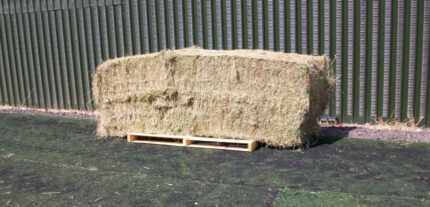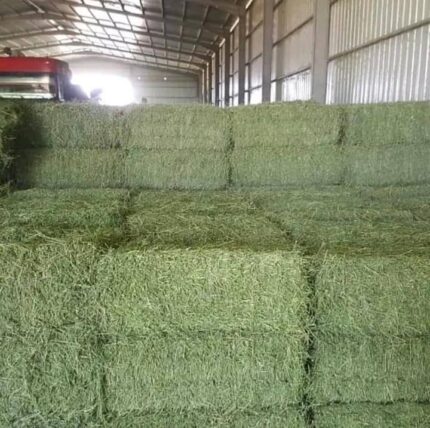BROME/CLOVER/PRAIRIE HAY
A mixture of Brome, Clover, and Prairie hay combines several grasses and legumes to create a diverse and nutritious forage option for livestock and herbivorous pets. Each component contributes unique characteristics and nutritional benefits, resulting in a balanced feed that supports overall health and well-being. Here’s a detailed description of each component and the benefits of their combination:
*Brome Grass:*
– Brome grass (Bromus spp.) is a cool-season perennial grass known for its high yield, palatability, and nutritional value. It forms dense, sod-forming stands and produces fine-textured leaves and seed heads.
– *Nutritional Profile:* Brome grass hay is rich in fiber, particularly cellulose and hemicellulose, which support healthy digestion and gut motility in animals. It also provides moderate levels of protein, essential for muscle maintenance and growth.
– *Forage Quality:* Brome grass hay is characterized by its soft texture, vibrant green color when freshly cut, and sweet aroma. It is highly palatable to livestock and pets, encouraging regular consumption.
*Clover:*
– Clover (Trifolium spp.) is a leguminous plant commonly added to hay mixtures for its nitrogen-fixing capabilities and high protein content. Common varieties include red clover, white clover, and alsike clover.
– *Nutritional Profile:* Clover hay is prized for its elevated protein content, making it an excellent source of essential amino acids for animals. It also contains vitamins and minerals such as vitamin A, vitamin D, calcium, and phosphorus, vital for overall health.
– *Forage Quality:* Clover hay adds diversity to the hay mixture with its distinct leaf shape and color. It provides a burst of flavor and nutrition, enhancing the palatability of the feed and promoting intake.
*Prairie Grass:*
– Prairie grasses encompass a variety of native grass species found in prairie ecosystems, such as switchgrass, big bluestem, and little bluestem. These grasses contribute to the biodiversity and resilience of natural grasslands.
– *Nutritional Profile:* Prairie grasses offer a range of nutritional benefits, including high fiber content, which supports healthy digestion, and moderate protein levels necessary for animal growth and development.
– *Environmental Benefits:* Incorporating native prairie grasses into hay mixtures promotes biodiversity, soil health, and ecosystem resilience. These grasses have deep root systems that help prevent erosion and improve soil structure.
*Benefits of the Mixture:*
– *Balanced Nutrition:* The combination of Brome, Clover, and Prairie hay provides a balanced blend of fiber, protein, vitamins, and minerals essential for the overall health and well-being of animals.
– *Palatability:* Each component contributes to the palatability of the hay mixture, enticing animals to consume it readily and ensuring adequate nutrient intake.
– *Digestive Health:* The fiber-rich nature of the mixture supports optimal digestion and gut function, helping to prevent digestive issues such as bloating and gastrointestinal stasis in herbivorous animals.
– *Dental Health:* Chewing on the fibrous stems and leaves of the hay mixture promotes natural dental wear, reducing the risk of dental problems like malocclusion and overgrowth.
– *Environmental Sustainability:* Incorporating prairie grasses into the mixture promotes sustainable forage management practices and supports biodiversity conservation in agricultural landscapes.
*Harvesting and Quality Considerations:*
– The components of the hay mixture are typically harvested at the peak of nutritional quality, ensuring maximum nutrient retention and palatability.
– Quality considerations include freshness, color, texture, and cleanliness. High-quality hay should have a fresh aroma, vibrant color, soft texture, and be free from mold, dust, and contaminants.
In conclusion, a mixture of Brome, Clover, and Prairie hay offers a diverse and nutritious forage option for livestock and herbivorous pets. Combining these components provides a balanced diet that supports overall health, digestive function, and environmental sustainability. When selecting hay mixtures, prioritize freshness, quality, and diversity to ensure optimal nutrition for your animals.
















Reviews
There are no reviews yet.